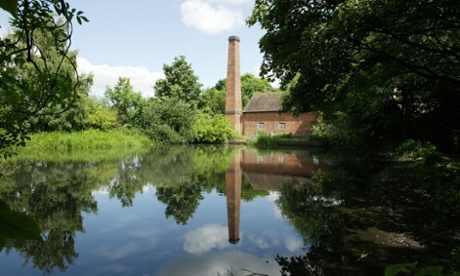
Seven miles north of Birmingham city centre, Sutton Park unfurls itself as a mosaic of open heathland, woodland, wetlands and seven lakes. There are over 2,200 acres in all, making it the seventh-largest urban park in Europe. Head 10 miles in the other direction instead and the city will finally roll away into Worcestershire through the wooded undulations of the Lickey Hills.
But you don’t have to travel to the far edges of town to find open green spaces: Birmingham has more parks than any European city. Handsworth, 10 minutes north-west of the city centre, is blessed with some 64 acres of parkland, laid out in the 1880s and given a £9.6m makeover in 2006. There’s a boating lake, fringed by abundant plant life and brushed by weeping willows, and a well-maintained cricket pitch. And on the Hamstead Road side of the park is the rambling, rustic-looking graveyard adjoining St Mary’s church.
Among those buried here is the forger William Booth, who used to turn out coins and bank notes in his house in nearby Great Barr. “He had to be hanged twice in 1812 because the rope snapped first time,” says Rector Bob Stephen. Also here is the grave of William McGregor, former chairman of Aston Villa, who helped found the Football League in the late 1880s. There’s also a statue of McGregor outside Villa Park, seemingly peering towards the adjoining Aston Park.
Open spaces are even more prevalent on the south side of the city. Moseley Bog, described by JRR Tolkien as the “lost paradise” of his boyhood, is 22 acres of dense and squelchy woodland. “They could have filmed Lord of the Rings here but they’d have had to close off the outer-circle bus route,” former guide Bob Blackham once told me.
Neighbouring Edgbaston has more than its fair share of open spaces. Cannon Hill park offers verdant spreads down from Moseley, with rare views of the river Rea and the chance to enjoy outside cinema, theatre or music at the Midlands Arts Centre, while the botanical gardens are packed with exotic plants in glasshouses and formal borders.
Owned by the Calthorpe estate, the Martineau gardens on nearby Priory Road are free to visit and provide a marvellous green space for inner-city children.
“We have over 60 species of birds,” says director Caroline Hatton. The further you wander into the adjoining woodland, the more you can hear their song over the drone of traffic and the less likely it seems that you’re just a few miles from the city centre.







